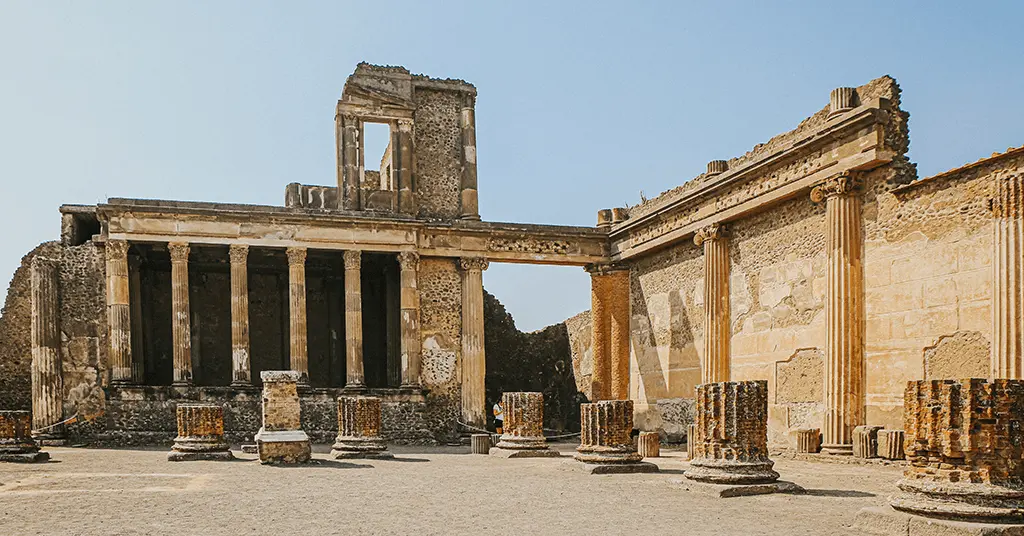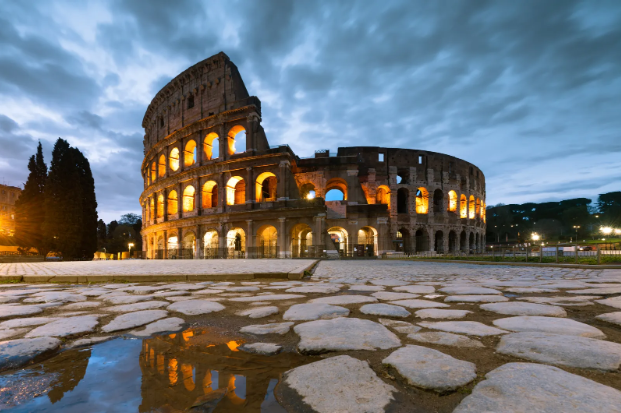Introduction to Cultural Resource Management
Cultural Resource Management (CRM) is a profession dedicated to preserving, managing, and safeguarding cultural assets. These resources range from archaeological sites and historical buildings to intangible cultural practices like storytelling, music, and traditional dances. The field is broad and involves many disciplines, including archaeology, architecture, anthropology, and heritage preservation. It plays a critical role in ensuring that cultural heritage is protected while accommodating modern developments and infrastructure projects.

The Importance of Cultural Resource Management
Cultural Resource Management is vital because it helps preserve the historical and cultural fabric of societies. Without proper management, many significant cultural and historical sites could be lost to development, natural disasters, or neglect. CRM ensures that these resources are documented, studied, and maintained for future generations. It also promotes public awareness of cultural heritage, encouraging respect and understanding of diverse traditions.
The Role of Archaeology in Cultural Resource Management

Archaeology plays a key role in cultural resource management. CRM archaeologists are responsible for investigating sites that could be impacted by construction or other land-use projects. They conduct surveys and excavations to ensure that significant archaeological resources are identified and protected. Through this process, CRM helps balance the needs of modern development with the preservation of ancient sites and artifacts, offering insights into human history.
Cultural Resource Management and Historical Preservation
Historical preservation is a major aspect of cultural resource management. This involves protecting historical buildings, monuments, and landscapes from destruction or alteration. CRM professionals work with government agencies and private developers to ensure that these sites are not harmed during new projects. By preserving historical structures, CRM helps maintain a connection to the past, providing a physical link to the culture and history of a region.
Managing Intangible Cultural Resources
Cultural Resource Management is not limited to physical sites; it also involves the protection of intangible cultural resources. These include traditions, languages, music, and rituals passed down through generations. CRM professionals work to document and promote these intangible resources to ensure they are not lost over time. Protecting intangible culture is especially important for indigenous communities, whose practices may be threatened by globalization or modernization.
Legal Framework in Cultural Resource Management
The legal framework is essential in cultural resource management. Various laws and regulations, such as the National Historic Preservation Act (NHPA) in the United States, govern how cultural resources should be managed. CRM professionals must ensure that projects comply with these laws, conducting reviews and assessments to minimize the impact on cultural resources. These regulations are vital in protecting sites from unchecked development.
The Role of Cultural Resource Management in Development Projects
Cultural Resource Management is often involved in development projects to mitigate potential damage to cultural sites. Before a project can begin, CRM professionals carry out assessments to determine if the site has any cultural significance. If important resources are found, plans may be adjusted to avoid harm, or mitigation measures may be put in place. This ensures that development does not come at the cost of losing valuable cultural heritage.
Careers in Cultural Resource Management

There are various career opportunities in cultural resource management, ranging from field archaeologists to museum curators. Professionals in this field often work for government agencies, museums, or private consulting firms. Their work involves conducting research, managing cultural sites, and working with communities to ensure that their cultural resources are respected and preserved. Careers in CRM require a strong background in social sciences, particularly archaeology, anthropology, and history.
The Challenges in Cultural Resource Management
Cultural Resource Management faces several challenges, including balancing development with preservation, funding limitations, and public awareness. Many sites are at risk due to urban expansion or lack of resources for proper management. Another challenge is ensuring that cultural resources are recognized as significant, even if they do not meet strict legal criteria. Advocating for the protection of lesser-known sites and intangible resources is an ongoing effort in CRM.
The Future of Cultural Resource Management
The future of cultural resource management will likely involve more collaboration with technology. Innovations such as 3D mapping, virtual reality, and digital archiving are already transforming how cultural resources are documented and preserved. Additionally, the focus on sustainability and eco-friendly practices in development projects is expected to increase, creating new opportunities for CRM professionals to protect cultural heritage while supporting modern needs.
The Role of Museums in Cultural Resource Management
Museums play a pivotal role in Cultural Resource Management by acting as repositories for cultural and historical artifacts. They are not just places for public viewing but also centers for research, preservation, and education. Many CRM professionals collaborate with museums to curate and protect items recovered from archaeological sites or heritage locations. These institutions help ensure that cultural resources are accessible to the public, fostering a deeper understanding of history and culture.
Museums often house collections that have been preserved from threatened or destroyed sites, ensuring that even if a location is lost, its cultural significance can be maintained. CRM specialists working in museums also engage in conservation practices, repairing and maintaining artifacts to prevent further deterioration. Thus, museums are essential partners in the broader goal of cultural preservation.
The Economic Impact of Cultural Resource Management
Cultural Resource Management can have a significant economic impact, particularly in the context of cultural tourism. Many regions around the world rely on their cultural and historical sites to attract visitors. Well-managed cultural resources contribute to local economies by bringing in tourists, creating jobs, and fostering community pride. For example, archaeological sites like the Pyramids of Egypt or the ruins of Pompeii draw millions of visitors annually, contributing to the economies of those regions.
In addition to tourism, CRM can support local economies by preserving traditional crafts and practices. These can become marketable products or experiences, such as indigenous crafts sold in local markets or cultural performances for tourists. By protecting and promoting cultural resources, CRM helps sustain economic activities tied to heritage.
Community Involvement in Cultural Resource Management
Effective Cultural Resource Management often requires strong community involvement. Local communities, particularly indigenous and minority groups, hold valuable knowledge about cultural resources, including sacred sites, traditions, and practices. Involving these communities in decision-making processes ensures that their cultural heritage is respected and preserved in ways that are meaningful to them.
Community involvement in CRM can take many forms, from participation in archaeological digs to contributing oral histories and folklore. This collaborative approach not only strengthens the preservation of cultural resources but also fosters a sense of ownership and pride among community members. Moreover, it helps avoid conflicts that might arise when external authorities impose preservation measures without consulting the local population.
Technology in Cultural Resource Management
Technological advancements are transforming the field of Cultural Resource Management, making it easier to document, preserve, and share cultural resources. Tools such as Geographic Information Systems (GIS), drones, and 3D scanning have revolutionized how sites are surveyed and monitored. These technologies allow CRM professionals to gather detailed data about cultural sites without disturbing them, making it easier to protect sensitive areas.
In addition to fieldwork, technology has made it possible to create digital archives of cultural resources. These archives allow researchers, students, and the public to access cultural heritage from anywhere in the world. Virtual reality and augmented reality are also being used to recreate historical sites, offering immersive educational experiences that bring the past to life in ways that were previously unimaginable.
Sustainable Development and Cultural Resource Management
The concept of sustainable development is closely linked to Cultural Resource Management. As populations grow and cities expand, it is increasingly important to ensure that development does not come at the expense of cultural heritage. CRM plays a critical role in ensuring that development projects are planned and executed in ways that minimize harm to cultural resources.
This often involves conducting Environmental Impact Assessments (EIA) that take cultural resources into account. These assessments help developers and governments make informed decisions about how to proceed with construction or land use projects while protecting important cultural sites. Sustainable development practices in CRM aim to balance economic growth with the long-term preservation of cultural heritage, ensuring that future generations can benefit from both.
Conclusion
Cultural Resource Management is an essential practice that safeguards the world’s cultural heritage. From ancient archaeological sites to intangible traditions, CRM professionals work to ensure that these resources are preserved for future generations. The field requires a multidisciplinary approach, combining archaeology, anthropology, history, and legal knowledge to protect cultural assets while accommodating modern needs.As society continues to evolve, the role of CRM becomes even more critical in balancing development with the preservation of cultural identity. With the help of technology, community involvement, and legal frameworks, CRM will continue to play a key role in protecting the rich cultural diversity that defines human civilization. By recognizing the value of Cultural Resource Management, we can ensure that the past remains a vibrant part of our collective future.
Cultural Resource Management (CRM) is a profession dedicated to preserving, managing, and safeguarding cultural assets. These resources range from archaeological sites and historical buildings to intangible cultural practices like storytelling, music, and traditional dances. The field is broad and involves many disciplines, including archaeology, architecture, anthropology, and heritage preservation. It plays a critical role in ensuring that cultural heritage is protected while accommodating modern developments and infrastructure projects.
The Importance of Cultural Resource Management
Cultural Resource Management is vital because it helps preserve the historical and cultural fabric of societies. Without proper management, many significant cultural and historical sites could be lost to development, natural disasters, or neglect. CRM ensures that these resources are documented, studied, and maintained for future generations. It also promotes public awareness of cultural heritage, encouraging respect and understanding of diverse traditions.
The Role of Archaeology in Cultural Resource Management
Archaeology plays a key role in cultural resource management. CRM archaeologists are responsible for investigating sites that could be impacted by construction or other land-use projects. They conduct surveys and excavations to ensure that significant archaeological resources are identified and protected. Through this process, CRM helps balance the needs of modern development with the preservation of ancient sites and artifacts, offering insights into human history.
Cultural Resource Management and Historical Preservation
Historical preservation is a major aspect of cultural resource management. This involves protecting historical buildings, monuments, and landscapes from destruction or alteration. CRM professionals work with government agencies and private developers to ensure that these sites are not harmed during new projects. By preserving historical structures, CRM helps maintain a connection to the past, providing a physical link to the culture and history of a region.
Managing Intangible Cultural Resources
Cultural Resource Management is not limited to physical sites; it also involves the protection of intangible cultural resources. These include traditions, languages, music, and rituals passed down through generations. CRM professionals work to document and promote these intangible resources to ensure they are not lost over time. Protecting intangible culture is especially important for indigenous communities, whose practices may be threatened by globalization or modernization.
Legal Framework in Cultural Resource Management
The legal framework is essential in cultural resource management. Various laws and regulations, such as the National Historic Preservation Act (NHPA) in the United States, govern how cultural resources should be managed. CRM professionals must ensure that projects comply with these laws, conducting reviews and assessments to minimize the impact on cultural resources. These regulations are vital in protecting sites from unchecked development.
The Role of Cultural Resource Management in Development Projects
Cultural Resource Management is often involved in development projects to mitigate potential damage to cultural sites. Before a project can begin, CRM professionals carry out assessments to determine if the site has any cultural significance. If important resources are found, plans may be adjusted to avoid harm, or mitigation measures may be put in place. This ensures that development does not come at the cost of losing valuable cultural heritage.
Careers in Cultural Resource Management
There are various career opportunities in cultural resource management, ranging from field archaeologists to museum curators. Professionals in this field often work for government agencies, museums, or private consulting firms. Their work involves conducting research, managing cultural sites, and working with communities to ensure that their cultural resources are respected and preserved. Careers in CRM require a strong background in social sciences, particularly archaeology, anthropology, and history.
The Challenges in Cultural Resource Management
Cultural Resource Management faces several challenges, including balancing development with preservation, funding limitations, and public awareness. Many sites are at risk due to urban expansion or lack of resources for proper management. Another challenge is ensuring that cultural resources are recognized as significant, even if they do not meet strict legal criteria. Advocating for the protection of lesser-known sites and intangible resources is an ongoing effort in CRM.
The Future of Cultural Resource Management
The future of cultural resource management will likely involve more collaboration with technology. Innovations such as 3D mapping, virtual reality, and digital archiving are already transforming how cultural resources are documented and preserved. Additionally, the focus on sustainability and eco-friendly practices in development projects is expected to increase, creating new opportunities for CRM professionals to protect cultural heritage while supporting modern needs.
The Role of Museums in Cultural Resource Management
Museums play a pivotal role in Cultural Resource Management by acting as repositories for cultural and historical artifacts. They are not just places for public viewing but also centers for research, preservation, and education. Many CRM professionals collaborate with museums to curate and protect items recovered from archaeological sites or heritage locations. These institutions help ensure that cultural resources are accessible to the public, fostering a deeper understanding of history and culture.
Museums often house collections that have been preserved from threatened or destroyed sites, ensuring that even if a location is lost, its cultural significance can be maintained. CRM specialists working in museums also engage in conservation practices, repairing and maintaining artifacts to prevent further deterioration. Thus, museums are essential partners in the broader goal of cultural preservation.
The Economic Impact of Cultural Resource Management
Cultural Resource Management can have a significant economic impact, particularly in the context of cultural tourism. Many regions around the world rely on their cultural and historical sites to attract visitors. Well-managed cultural resources contribute to local economies by bringing in tourists, creating jobs, and fostering community pride. For example, archaeological sites like the Pyramids of Egypt or the ruins of Pompeii draw millions of visitors annually, contributing to the economies of those regions.
In addition to tourism, CRM can support local economies by preserving traditional crafts and practices. These can become marketable products or experiences, such as indigenous crafts sold in local markets or cultural performances for tourists. By protecting and promoting cultural resources, CRM helps sustain economic activities tied to heritage.
Community Involvement in Cultural Resource Management
Effective Cultural Resource Management often requires strong community involvement. Local communities, particularly indigenous and minority groups, hold valuable knowledge about cultural resources, including sacred sites, traditions, and practices. Involving these communities in decision-making processes ensures that their cultural heritage is respected and preserved in ways that are meaningful to them.
Community involvement in CRM can take many forms, from participation in archaeological digs to contributing oral histories and folklore. This collaborative approach not only strengthens the preservation of cultural resources but also fosters a sense of ownership and pride among community members. Moreover, it helps avoid conflicts that might arise when external authorities impose preservation measures without consulting the local population.
Technology in Cultural Resource Management

Technological advancements are transforming the field of Cultural Resource Management, making it easier to document, preserve, and share cultural resources. Tools such as Geographic Information Systems (GIS), drones, and 3D scanning have revolutionized how sites are surveyed and monitored. These technologies allow CRM professionals to gather detailed data about cultural sites without disturbing them, making it easier to protect sensitive areas.
In addition to fieldwork, technology has made it possible to create digital archives of cultural resources. These archives allow researchers, students, and the public to access cultural heritage from anywhere in the world. Virtual reality and augmented reality are also being used to recreate historical sites, offering immersive educational experiences that bring the past to life in ways that were previously unimaginable.
Sustainable Development and Cultural Resource Management
The concept of sustainable development is closely linked to Cultural Resource Management. As populations grow and cities expand, it is increasingly important to ensure that development does not come at the expense of cultural heritage. CRM plays a critical role in ensuring that development projects are planned and executed in ways that minimize harm to cultural resources.
This often involves conducting Environmental Impact Assessments (EIA) that take cultural resources into account. These assessments help developers and governments make informed decisions about how to proceed with construction or land use projects while protecting important cultural sites. Sustainable development practices in CRM aim to balance economic growth with the long-term preservation of cultural heritage, ensuring that future generations can benefit from both.
Conclusion
Cultural Resource Management is an essential practice that safeguards the world’s cultural heritage. From ancient archaeological sites to intangible traditions, CRM professionals work to ensure that these resources are preserved for future generations. The field requires a multidisciplinary approach, combining archaeology, anthropology, history, and legal knowledge to protect cultural assets while accommodating modern needs.As society continues to evolve, the role of CRM becomes even more critical in balancing development with the preservation of cultural identity. With the help of technology, community involvement, and legal frameworks, CRM will continue to play a key role in protecting the rich cultural diversity that defines human civilization. By recognizing the value of Cultural Resource Management, we can ensure that the past remains a vibrant part of our collective future.
FAQs
What is Cultural Resource Management (CRM)?
Cultural Resource Management (CRM) is the practice of managing, preserving, and protecting cultural heritage assets such as archaeological sites, historical structures, artifacts, and intangible heritage like folklore and traditions. CRM ensures these resources are protected for future generations, often within the context of development and urban expansion.
What are some examples of cultural resources?
Cultural resources include a wide range of elements, such as historic buildings, archaeological sites, ancient artifacts, sacred lands, cultural landscapes, traditional practices, and even languages. It can encompass both physical items (like sculptures or buildings) and intangible elements (like oral histories or music traditions).
Why is Cultural Resource Management important?
CRM is crucial for preserving historical and cultural assets that might otherwise be lost due to development, neglect, or environmental damage. These resources provide insight into our collective past, help maintain cultural diversity, and contribute to a society’s identity and sense of continuity.
How does Cultural Resource Management work with development projects?
CRM professionals work alongside developers to assess the potential impacts of construction projects on cultural resources. They conduct surveys, evaluations, and Environmental Impact Assessments (EIA) to ensure that significant cultural sites are protected or appropriately managed during development, often proposing solutions to avoid or minimize damage.
What careers are available in Cultural Resource Management?
Careers in CRM span various fields, including archaeology, anthropology, historical preservation, and cultural tourism. Job roles range from field technicians and archaeologists to museum curators, historic site managers, and consultants who ensure compliance with Check important info.


